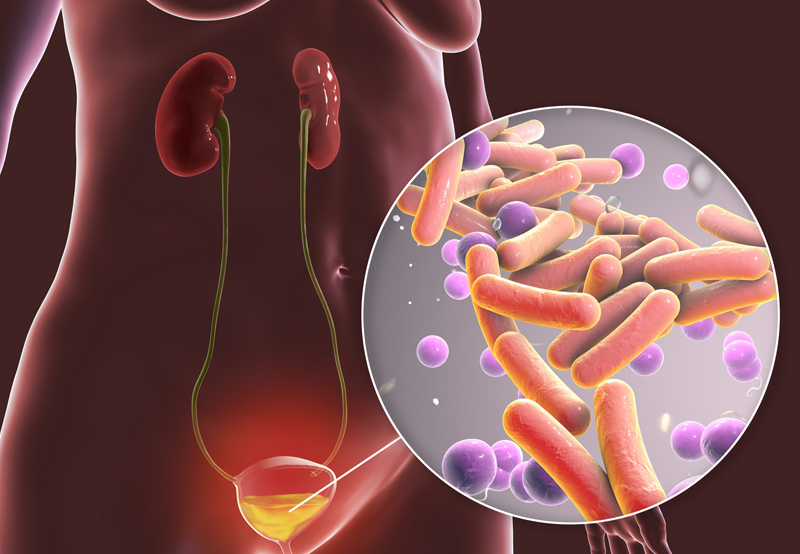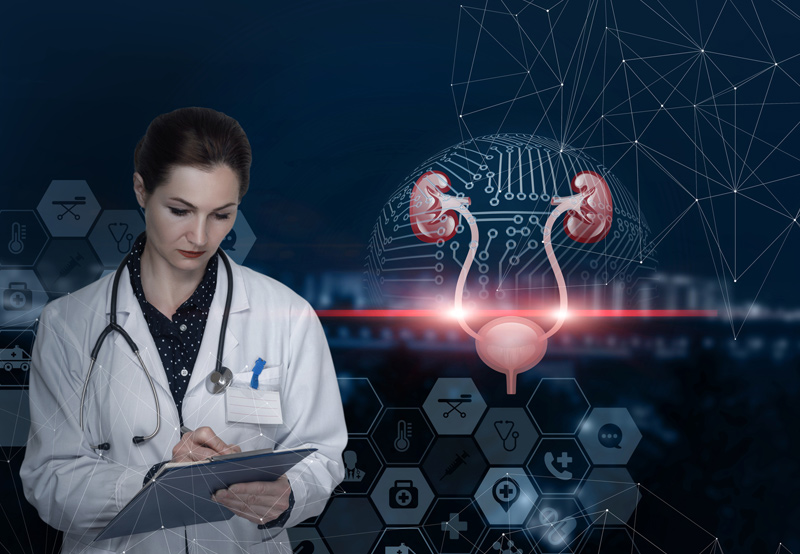

A urinary tract infection (UTI) occurs when bacteria gets into the urine and travels up to the bladder. A recurrent UTI is defined as three UTIs within 12 months, or two within six months.
How the Urinary Tract Works
The urinary tract makes and stores urine, one of the waste products of the body. The kidneys make urine, which then travels down the ureters to the bladder, where it is stored until it is emptied by urinating through the urethra. In men, the opening of the urethra is at the end of the penis. In women, it is above the vaginal opening.
The kidneys filter liquid waste from the blood and remove it from the body in the form of urine. The kidneys are responsible for balancing the levels of various chemicals in the body, such as calcium, potassium, sodium, and phosphorus, and checking the blood’s acidity. The kidneys also create hormones, help control blood pressure, support bone strength, and boost red blood cell production.
Healthy urine doesn’t contain very large amount of pathogenic (disease causing) bacteria that is detectable by current microbiologic culture methods. Recent studies have shown healthy urine does include a balanced number of bacteria which live in the bladder and they do not cause disease or symptoms. The one-way flow of urine helps prevent infections, but if pathogenic bacteria gets into urine through the urethra and does not cleared out by natural elimination mechanisms, it may travel up into the bladder and cause a UTI.

Symptoms of a UTI
Patients diagnosed with a UTI may experience the following symptoms:
- Pain in the lower abdomen pelvic area
- Pain in the lower back
- Frequent urination
- Burning or pain when urinating
- Strong urge to urinate
- Inability to urinate
- Urinary incontinence
- Foul-smelling urine
- Cloudy urine
If the kidneys are infected, patients may experience fevers, upper back pain, nausea, and vomiting.
Causes of Urinary Tract Infections
Women are more likely to get a UTI because their urethras are shorter, meaning bacteria have a shorter distance to travel to reach the bladder.
The risk factors for UTIs include:
- Body factors. Women who have completed menopause don’t have the protection of estrogen. Other women may be genetically predisposed to UTIs. Sexual intercourse may also impact the frequency of UTIs.
- Birth control. The use of diaphragms increases the risk of UTIs, compared to those who use other forms of birth control. Use of condoms with spermicidal foams also increases the risk of UTIs in women.
- Anatomical abnormalities. Individuals with a device placed in the urinary tract to help them urinate are at increased risk of UTIs. A blockage can also contribute to the risk of UTIs. Outpouchings, called diverticula, in the bladder or urethra may harbor bacteria. An enlarged bladder may prevent the bladder from draining urine.
- Immune system. Diabetes increases the risk of UTIs because the body’s immune system is suppressed.
Diagnosing and Managing Recurrent UTIs
The physician will obtain a urinalysis and urine culture for each episode of UTI before beginning antibiotic treatment. While waiting for lab results, physicians may provide patients with hydration and analgesics. Patients with severe symptoms may be prescribed nitrofurantoin, TMP-SMX, and fosfomycin prior to obtaining results. Antibiotic treatment will be as short as possible, typically no longer than seven days.
If urine culture reveals a resistance to oral antibiotics, patients may be treated with culture-directed parental antibiotics for no more than seven days.

